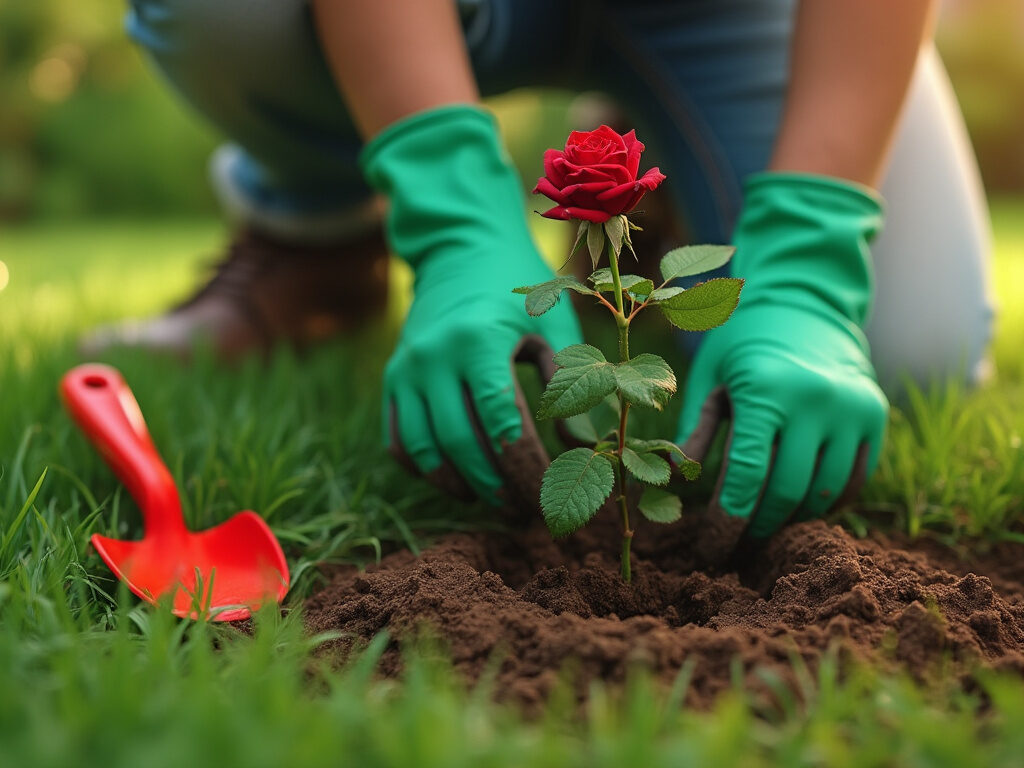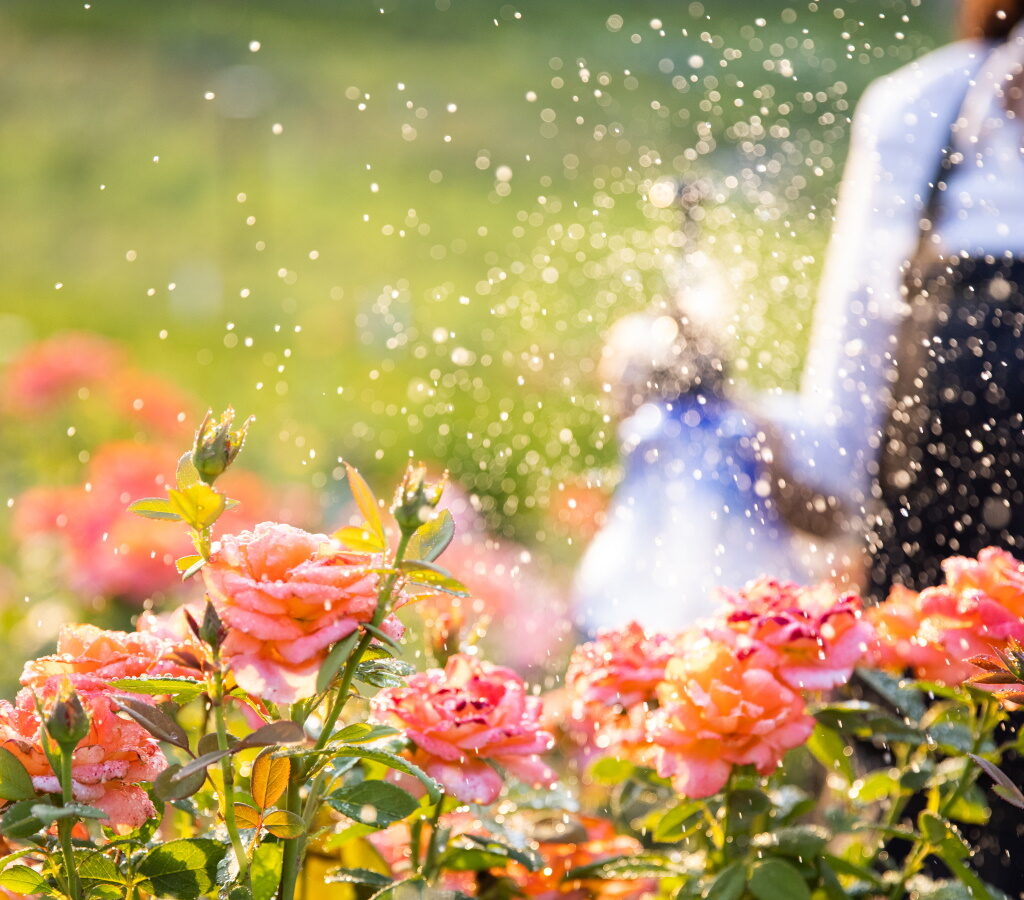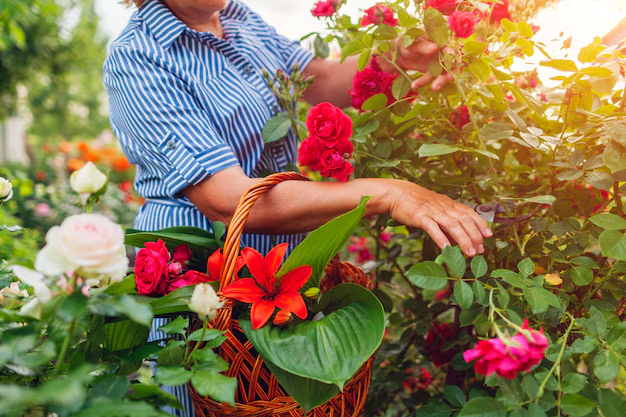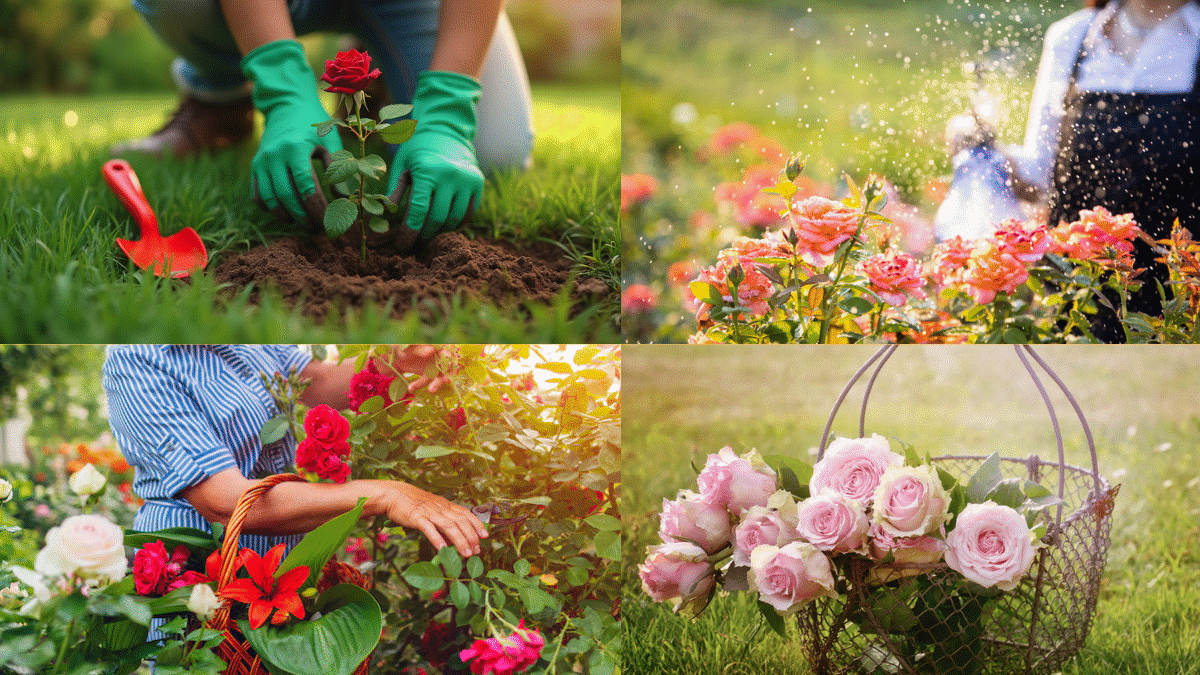Few plants can rival the beauty, elegance, and timeless charm of roses. With their velvety petals, rich colors, and intoxicating fragrance, roses have captured hearts for centuries. Whether you want to brighten up your garden, create a romantic archway, or harvest blooms for home bouquets, planting roses is a delightful gardening project for beginners and seasoned growers alike.
In this comprehensive guide, we’ll show you how to plant roses for healthy, vibrant, and fragrant blooms — from choosing the right varieties to soil preparation, planting, and ongoing care.

Why Grow Roses in Your Garden?
Before we get our hands in the soil, let’s explore why roses deserve a special place in your landscape:
- Stunning Blooms: Roses come in a wide array of colors, shapes, and sizes, offering endless possibilities for garden design.
- Fragrance: Few flowers can match the heavenly scent of a rose.
- Pollinator-Friendly: Their blooms attract bees, butterflies, and other beneficial insects.
- Versatile: From climbing varieties to shrub and miniature roses, there’s a type for every space and garden style.
- Cut Flowers: Perfect for fresh bouquets and arrangements straight from your yard.
Choosing the Right Rose Variety
Selecting the best rose variety for your location and garden goals is the first step toward success. Roses are categorized into several types:
Common Rose Types:
- Hybrid Tea Roses: Large, elegant blooms ideal for cutting.
- Floribunda Roses: Clusters of flowers, great for borders.
- Grandiflora Roses: Tall with large, showy blooms.
- Climbing Roses: Perfect for arbors, fences, or trellises.
- Shrub Roses: Hardy and low-maintenance, perfect for hedges.
- Miniature Roses: Compact and ideal for pots or small gardens.
Consider These Factors:
- Climate: Check which varieties are suited to your USDA hardiness zone.
- Bloom Color & Fragrance: Choose shades and scents you love.
- Growth Habit: Consider the space you have — sprawling climbers need room, while miniatures suit containers.

When to Plant Roses
The best time to plant roses depends on your climate and whether you’re using bare-root or potted plants.
- Bare-root Roses: Plant in early spring (after the last frost) or fall (at least 6 weeks before the first hard frost).
- Potted Roses: Can be planted any time the soil is workable and temperatures are moderate.
Ideal soil temperature is 60–70°F (16–21°C).
Where to Plant Roses
Roses are sun-loving plants and thrive with proper air circulation and well-drained soil.
Ideal Site Conditions:
- Full Sun: At least 6–8 hours of direct sunlight daily.
- Good Airflow: Prevents fungal diseases like black spot and powdery mildew.
- Well-Drained, Fertile Soil: Rich in organic matter with a pH between 6.0–6.5.
Avoid planting roses in spots where other roses have recently grown to prevent soil-borne diseases.
How to Prepare the Soil
A successful rose bed starts with healthy soil.
Steps for Soil Preparation:
- Loosen the soil to a depth of 12–18 inches.
- Amend the soil with well-rotted compost or organic matter.
- Add bone meal or rose fertilizer to encourage strong root development.
- Ensure good drainage: If the site has heavy clay, mix in sand or perlite.
How to Plant Roses Step-by-Step
Here’s a simple, foolproof method for planting both bare-root and potted roses.
Planting Bare-Root Roses:
- Soak roots in a bucket of water for 4–6 hours.
- Dig a hole 18 inches wide and deep enough to accommodate the roots.
- Create a mound of soil at the base for roots to rest on.
- Place the rose in the hole, spreading out the roots.
- Ensure the bud union (swollen area above roots) is 1–2 inches below soil level in cold climates and at soil level in warmer zones.
- Backfill with soil, firming gently.
- Water thoroughly and add mulch.
Planting Potted Roses:
- Remove the plant from the container.
- Loosen any circling roots.
- Plant using the same method as above, ensuring the bud union is at the appropriate depth.
- Water deeply and mulch.

Watering and Fertilizing Roses
Watering:
- Roses need 1–2 inches of water per week.
- Water deeply at the base to encourage deep root growth.
- Avoid overhead watering to prevent disease.
Fertilizing:
- Apply a balanced, slow-release fertilizer (10-10-10) at planting.
- Fertilize every 4–6 weeks during the growing season.
- Switch to a low-nitrogen fertilizer in late summer to help harden off the plants before winter.
Pruning and Deadheading Roses
Pruning:
- Prune in late winter or early spring before new growth appears.
- Remove dead, damaged, or weak stems.
- Cut at a 45-degree angle above an outward-facing bud.
Deadheading:
- Regularly remove spent blooms to encourage continuous flowering.
- Cut back to the first set of healthy leaves with 5 leaflets.
Common Pests and Diseases
Roses can be prone to a few garden pests and fungal issues. Stay proactive with regular checks.
Pests:
- Aphids
- Spider mites
- Japanese beetles
Diseases:
- Black spot
- Powdery mildew
- Rust
Preventative Measures:
- Water at the base.
- Maintain good air circulation.
- Use organic insecticidal soap or neem oil.
- Apply a fungicide if necessary.

Winter Care for Roses
In colder climates, roses need protection during the winter.
Steps:
- Stop fertilizing 6 weeks before the first frost.
- Pile soil or mulch around the base of the plant.
- Use rose cones or burlap wraps for added insulation.
- Remove winter protection in early spring as new growth appears.
Tips for Healthy, Gorgeous Blooms
- Use mulch to retain moisture, suppress weeds, and regulate soil temperature.
- Feed regularly during the growing season.
- Deadhead spent flowers to prolong blooming.
- Choose disease-resistant varieties for easier care.
- Rotate planting spots every few years to avoid soil depletion.
Final Thoughts
Growing roses is more than just planting flowers — it’s an experience that brings beauty, fragrance, and romance to your outdoor space. With the right preparation, care, and a little patience, your garden can overflow with gorgeous, vibrant blooms season after season.
Whether you’re planting classic Hybrid Teas, carefree Shrub Roses, or charming Miniatures, following these simple steps will set you on the path to rose-growing success. So grab your gardening gloves and get ready to plant the garden of your dreams!





Leave A Comment